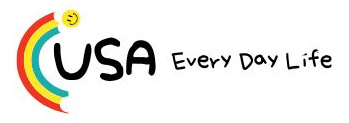The first five months of 2025 have thrown some curveballs into European markets — led by a more extreme and volatile U.S. tariff policy than most had anticipated, with the European Union now seeking to stave off a threatened 50% base rate . Familiar themes have continued to play out with new dimensions. Inflation across Europe is lower, interest rates are falling in the euro zone and U.K. , and energy prices have cooled from the sky-high rates of recent years, though the tariff story has injected more uncertainty into the outlook . The Russia-Ukraine war rumbles on, amid dwindling hopes for a ceasefire brokered by U.S. President Donald Trump are fragile. For investors, attention has focused on the impact of higher defense spending pledges from European governments, particularly Germany — recently unleashed from longstanding restraints on fiscal spending. This has driven a nearly 50% gain in the Stoxx Europe Aerospace and Defense Index in the year to date. European equities have fared better than their U.S. counterparts so far, with the regional Stoxx 600 index up around 8.5% in the year to date, compared with around 1% for the S & P 500 . What’s next for European markets as the Northern Hemisphere enters the summer season and the generally quieter local period of stock trading ? JPMorgan sector picks In a note to clients on Tuesday, JPMorgan equity strategists highlighted their preferred sectors for the next 12 to 18 months, during which period they see non-U.S. markets trading “increasingly more favorably” against their U.S. counterparts. Defense remains a top pick, they said, highlighting countries’ move from spending just an average 2% of their gross domestic product on the sector to as much as 3.5% through the decade. Politicians and regional business leaders wish to focus this spending on European companies, representing a growing market share of European orders, according to JPMorgan. Other analysts have nevertheless previously told CNBC that U.S. firms will undoubtedly benefit, too. European defense stocks are somewhat stretched on a technical basis, given their recent valuation increases, the JPMorgan analysts said — “but we believe earnings will deliver,” they added. The aerospace and defense sector can provide a “hedge on increased geopolitical uncertainty and as a beneficiary of rising defense spending,” they say. Along with pure defense names such as Rheinmetall and Babcock International , the investment bank identifies potential secondary winners from higher defense spend, to the tune of IT firms SAP , Dassault Systems and Infineon , and materials firms Thyssenkrupp , Umicore and Elementis. They also highlight an expected regional infrastructure spending boost, particularly in Germany, as benefiting construction and materials stocks, along with some industrials. Companies to watch are those focused on rail, construction equipment, manufacturing, transportation, and those with contracting divisions in Germany, the note says. Top names here include Air Liquide , Alstom , Heidelberg Materials and Saint-Gobain . Chemicals will meanwhile emerge as a potential beneficiary of lower energy costs despite ongoing concerns about the overall economic outlook, JPMorgan analysts continue. It is also one of the only emerging market-exposed cyclical sectors — which are exposed to economic trends — that is “starting to perform less poorly,” as opposed to the likes of autos and luxury, they said. Evonik Industries and Akzo Nobel are among its names to watch in this space. In the big picture, however, the analysts note some “challenging” competition for equities from the bond market, if yields become increasingly attractive. “Trade uncertainty is far from over, and the likely tariffs increase will end up much higher than anybody expected at the start of the year. The chances are that bond yields keep moving up, potentially for the wrong reasons,” they write.





